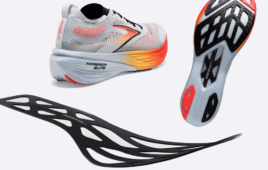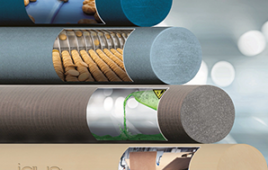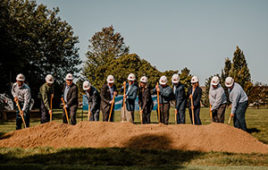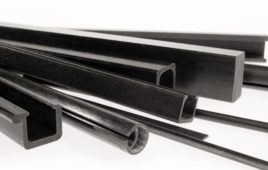Edited by Paul J. Heney, Editorial Director
Light-curable materials offer designers a fast solution for bonding parts.
Light-Curable Materials (LCMs) can offer users benefits over other types of materials. Over the last 30 years, advances have been made in material and curing equipment technology and thousands of companies worldwide now use light-curing technology to assemble and protect their parts.
Most light-curable materials cure fully in 1 to 30 seconds. This speed provides dramatic cost reducing benefits:
• Shorter cycle times—Less work-in-progress and shorter lead times.
• Increased capacity—Bonding steps that may have been bottlenecks with slower systems are no longer issues.
• Less floor space—Elimination of ovens, humidity chambers, conveyors and racks.
• Simple and better automation—Indexing time on a line is reduced, inspection can be completed on-line, and the complexity of fixturing during the curing process is reduced.
In addition, even more significant than speed, the one-component nature of light-curable materials can mean lower capital costs; dispensing systems for one-component materials cost significantly less than systems for two-component materials.

Two-component systems generally have pot lives (the time between when a multiple component system is mixed and when it is dispensed or thrown away) measured in minutes or hours. Two-part systems that cure in less than 30 minutes have pot lives of less than 10 minutes. As a result, two-component systems, especially those with shorter cure times, require frequent purge cycles and often result in clogged mixing elements, regardless of operational precautions. What’s more, material purged from a system that remains uncured is usually classified as hazardous waste. The A and B components of a two-component system are hazardous when not fully cured.
Of course, product performance is a critical factor in selecting between different technologies. LCMs offer greater adhesive strength to a wider range of substrates and exhibit a wider range of other physical properties than other comparative technologies.

Most light-curable materials cure fully in 1 to 30 seconds.
How they work
LCMs use energy provided by UV or visible light to start a curing reaction. In all practical systems, light emitted by a source reacts with a photoinitiator sensitive to UV light or UV and visible light. Different LCMs use photoinitiators sensitive to different ranges of UV and visible light. Thus, it’s important to match the material being cured with the source of light being used to cure the LCM.
Most light-curable resins used for assembly and thick layer curing, including all LCMs manufactured by Dymax, use a broad spectrum of UV light with a concentration in the UVA range to achieve cure. Some materials also use visible (blue) light for cure.
Factors influencing the cure speed of LCMs include (in no particular order):
• Light intensity on the LCM (will vary with thickness)
• Light wavelength present at LCM
• Photoinitiator sensitivity to light wavelength
• LCM resin composition
Curing bulbs (also called lamps) vary in their spectral output. Sometimes, filters modify the spectral output of a curing system. The important thing to remember is that the output of a curing lamp must be matched to the absorption of the photoinitiator in LCMs.
Basic types
There are two basic types of LCMs: Acrylates and epoxies.
Acrylate systems are a broad range of materials including acrylates, methacrylates, and similar functional groups. Acrylate systems react when exposed to UVA light (always) and visible light (in many cases). The materials exhibit a very broad range of properties. Depending on additives, acrylate systems can be produced which are colored (i.e., red, blue, or black), opaque, fluorescing (often a requirement for in-line inspection), or thermally conductive. The physical properties of acrylates can be varied more than epoxies. These properties include adhesion, viscosity, durometer, and appearance. Since they can be made to cure with visible light, fluorescing and red or blue acrylate formulations are common.
Cure speeds with acrylate resins depend on formulation specifics, and the intensity and nature of light used to cure them. Practical cure speeds generally range from 0.5 to 15 s. Depth of cure also varies with formula and process specifics. Typical cure depths range from 2.5 to 15 mm.
Acrylate LCMs can also be made to react with heat or an activator. This is useful when light can not be used to cure the material due to the presence of a shadow. Acrylate LCMs typically can not be cured with moisture or air. Cure options are shown on specific Product Data Sheets.
Surface tack is sometimes observed with acrylate LCMs. This is caused by the interference of atmospheric oxygen with the free radical cure mechanism on the surface of acrylate resins. In most cases, surface tack can be eliminated by altering the curing process (greater light intensity, longer cure time, or a slight adjustment in the wavelength of light used). Some acrylate LCMs will not cure tack-free. Most of these products were designed for applications where the LCM is not exposed to air, i.e., in bonding applications between two substrates.
Epoxy systems are sometimes called cationic systems by virtue of the type of photoinitiator employed, as opposed to the chemical make-up of the resin. The range of properties that can be achieved with epoxy LCMs is somewhat narrower than with acrylate LCMs. Nevertheless, epoxy LCMs may be formulated to exhibit a few advantages over some acrylate LCMs. These include tack-free cure (no oxygen inhibition) and superior adhesion to certain substrates.
Development of full properties of light curing epoxies often takes longer than for light curing acrylics. Heat is sometimes used to accelerate cationic LCM cure. Cationic LCM cure is impeded by moisture/humidity.

A 5-step process to choosing the proper LCM
Step 1: Adhesion. In most situations, the first consideration in choosing any assembly material is adhesion. Whether the application is bonding, coating, encapsulating, sealing or potting, candidate materials must demonstrate adequate adhesion to applicable substrate(s). Substrate selector charts are useful for selecting an initial group of product candidates.
When choosing material candidates based on adhesion:
• Determine candidates from substrate or product selector guides.
• Evaluate the adhesion of candidates using a pick test on the substrates to be bonded.
• Evaluate LCM adhesion under the real life stresses the part will experience. It may be necessary to over stress the bond area to accelerate candidate testing.
All adhesives and coatings are weakest when peel forces are applied. If the part and joint will be subjected to peel forces, material evaluations should be conducted taking into account anticipated forces and use conditions.
Step 2: Rheology. Next, consideration should be given to how the light-curable resin will be applied and how the material will flow once it is applied. High viscosity materials resist flow more than low viscosity materials. High thixotropy materials also show greater resistance to flow than low thixotropy materials. High thixotropy materials become thinner when they are sheared. Products that do not thin with shear are referred to as Newtonian. Gels have the properties of high viscosity and high thixotropy. These properties are desirable when negligible material flow after dispensing is required.
The table below lists some common materials, along with their approximate viscosities and rheology.

Step 3: Physical properties. Next, consideration should be given to other desirable physical properties. Normally, these include hardness, elongation, modulus, environmental resistance, appearance, etc. Physical properties are described on individual Product Data Sheets and can vary over a very wide range from one LCM to another.
Resistance to real-life stresses is an important criterion for choosing a material. In particular, temperature cycling, maximum operating temperature, solvent resistance, resistance to light (especially sunlight) and moisture are often critical factors in selecting an LCM. Remember that each application is unique and there is no substitute for real-life test results on actual parts subjected to the stress conditions that the parts will see over their expected lifetime.
Step 4: Cure Requirements. The cure requirements of the material should be considered. Most importantly, the question of whether shadow areas are present should be taken into account. If shadow areas are present, there are several options:
• Choose a viscosity and/or dispensing system that keeps the LCM out of shadows,
• Change the substrates so that they do not block light,
• Employ a secondary cure mechanism, i.e., heat or activator, or
• Choose an adhesive system other than one that cures with light.<
Step 5: Specifications. Industry specifications or requirements may be a make-or-break consideration. For example, USP Class VI or ISO 10993 designation for medical grade adhesives, IPC 830 qualification for conformal coatings, or UL94 V-0 designation for consumer electronics may be required. Where these standards apply, information is provided on product selector guides and data sheets.
Dymax
www.dymax.com
Filed Under: Materials • advanced





Tell Us What You Think!